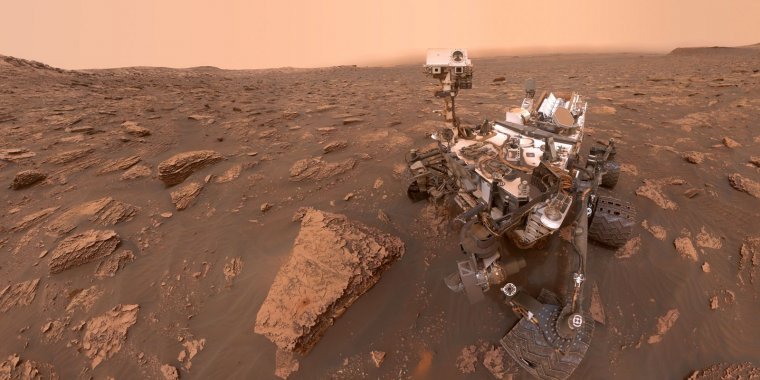| News / Space News |
Study suggests Mars hosted life-sustaining habitat for millions of years
An international team led by scientists from Brown University in the United States said the planet Mars once had the right water and temperatures to host simple life forms — just not on its surface. Mars's rocky, subterranean layer once, for some hundreds of millions of years, had enough water and reductants to support some of the same kinds of microbial communities seen on Earth.

Curiosity on Mars. Image credit: NASA
The paper does not claim life on Mars did exist but rather that conditions suitable for life are very likely to have lasted for an extended time. This habitable zone, located beneath Mars's then-frozen surface, would have reached several kilometers into Mars's surface, potentially protected by ice above.
The study showed that, during Mars's Noachian period (4.1–3.7 billion years ago), radiolysis, the process by which radiation splits water molecules apart, produced enough hydrogen gas (H2) for microbial organisms to live on so long as they remained within the area just beneath the cryosphere, the SHZ (subcryospheric highly-fractured zone).
The concentration of hydrogen in the groundwater could have ranged from about 35 to about 55 millimoles per liter depending on whether ancient Mars was warm or cold, respectively, and higher if the subsurface medium also contained enough salt.
The researchers determined this by establishing three factors. First, they examined data from the gamma ray spectrometer aboard NASA's Odyssey spacecraft, from which they inferred how much of various radioactive elements would have been present in Mars's crust during the Noachian, and therefore how much radiation would have been available to split water and so produce hydrogen.
They then built on existing models of water flow on Mars to determine how much groundwater would have been present. Third, they used climate and geothermal modeling to determine how much of that water would have been in liquid form and at a suitable temperature for living things.
In subterranean environments on Earth called subsurface lithotrophic microbial ecosystems, or SLiMEs, ecosystems sustain themselves not on plants that harness sunlight through photosynthesis but on microbes that harvest electrons from nearby molecules. Molecular hydrogen is an especially good electron donor. (Wikinews)
YOU MAY ALSO LIKE
